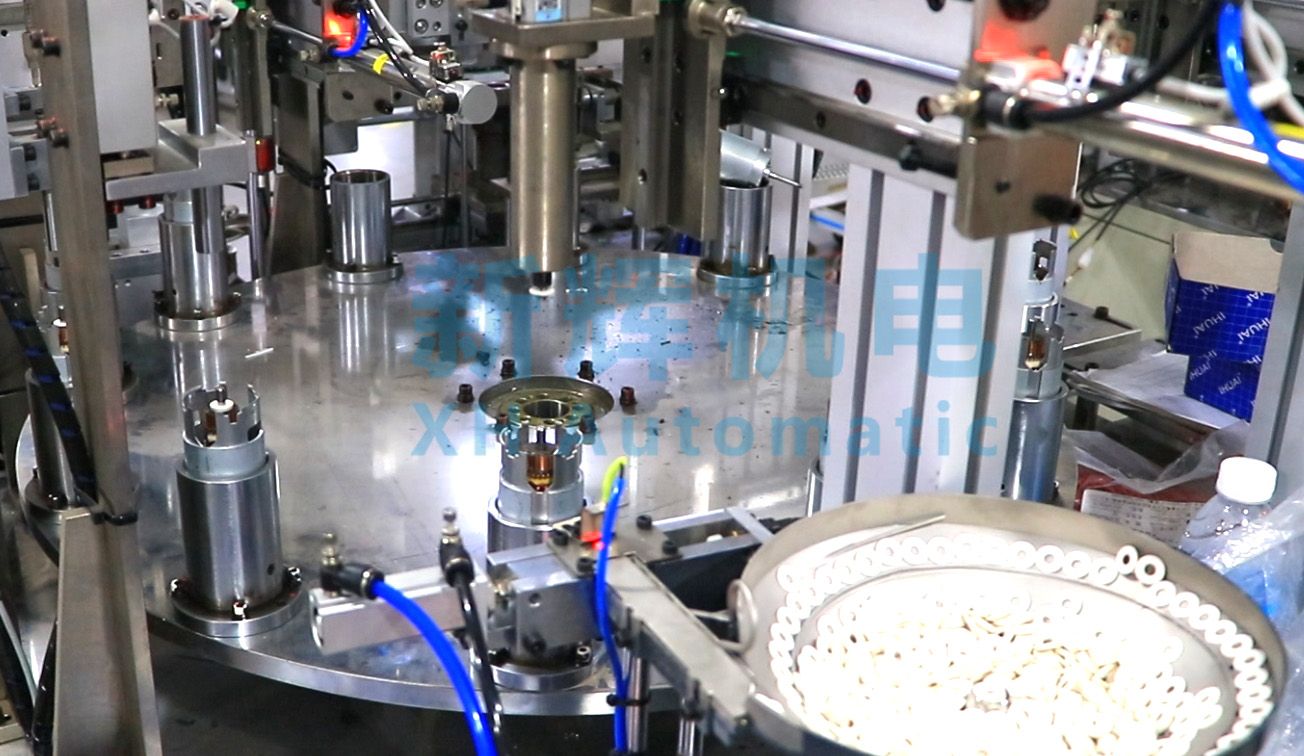What are the common sensor failures and their solutions for motor motor rotor automatic mesonizer?
Motor motor rotor automatic mesonizer common sensor failures and solutions are as follows:
1, photoelectric sensor failure
l Fault phenomenon:
Inaccurate detection of the rotor position, resulting in the meson installation position deviation.
The equipment can not start normally or suddenly stop during operation, that the rotor has not reached the specified position.
l Cause analysis:
The surface of the sensor is covered with contaminants such as dust and oil, which affects the transmission and reception of light.
The light emitting diode or photosensitive element of the sensor is damaged, resulting in the signal not being sent or received normally.
The installation position of the sensor is shifted, and it cannot accurately align with the rotor or related detection parts.
l Solution:
Clean the surface of the sensor regularly, use a clean soft cloth or special cleaner to gently wipe to remove pollutants.
Check the light-emitting diode and photosensitive element of the sensor, and replace the sensor with the same model in time if it is damaged.
Re-adjust the installation position of the sensor to ensure the accuracy of its alignment with the rotor or detection part, which can be adjusted by referring to the installation instructions of the equipment.

2、Hall sensor failure
l Fault phenomenon:
The rotor speed of the motor is unstable, sometimes fast and sometimes slow, affecting the consistency of the meson installation.
The motor can not start or start difficult, the controller can not get the accurate rotor position and speed information.
Abnormal vibration and noise occur during the operation of the equipment, due to the unstable rotor control.
l Cause analysis:
The Hall element is disturbed by the magnetic field, resulting in signal distortion.
The power supply line or signal transmission line of the sensor is broken or short-circuited.
Hall sensor aging, damage, performance degradation after long-term use.
l Solution:
Check whether there is a strong magnetic field source around the equipment, if so, move it away or take shielding measures to reduce the interference of the magnetic field on the Hall sensor.
Check the power supply line and signal transmission line, repair the broken point, remove the short-circuit fault, and ensure that the line is well connected.
Use a multimeter and other tools to detect the performance of the Hall sensor, if found aging or damaged, replace the new Hall sensor.
3, proximity sensor failure
l Fault phenomenon:
Unable to accurately detect the proximity signal of components such as rotor or dielectric, resulting in errors in the installation process.
The equipment misjudges the position of the components and sends out wrong control instructions, affecting the normal operation of the meson machine.
l Cause analysis:
The sensing surface of the sensor is covered with foreign matter such as metal chips and dust, which reduces the sensing sensitivity.
The detection distance of the sensor is improperly set and does not match the position of the actual part.
The electronic components inside the proximity sensor are damaged, affecting the signal generation and transmission.
l Solution:
Clean the sensing surface of the sensor, remove foreign objects and keep the sensing surface clean.
According to the actual position and size of the part, readjust the detection distance parameter of the proximity sensor to ensure that it can accurately detect the proximity signal of the part.
Test the proximity sensor, if the internal components are found to be damaged, replace the sensor or send it to a professional repairer for repair.
4, temperature sensor failure
l Failure phenomenon:
The equipment is unable to accurately monitor the temperature of the motor or related components, which may lead to overheating damage.
The temperature alarm system is out of order, unable to issue overheating alarm in time, there are hidden dangers.
l Cause analysis:
The probe of the temperature sensor has poor contact with the object to be measured, affecting the accuracy of temperature measurement.
The internal circuit of the sensor fails, resulting in the temperature signal not being converted and transmitted normally.
The temperature sensor drifts after long-term use, and the measurement accuracy decreases.
l Solution:
Check the contact between the temperature sensor probe and the object to be measured to ensure tight contact, and if it is loose, re-fix the probe.
Check and repair the internal circuit of the temperature sensor, and replace the damaged components, if any.
Regularly calibrate and verify the temperature sensor, if the measurement accuracy is found to be seriously degraded, replace the temperature sensor with a new one.
※ If you still can't solve the problem by the above ways and means, please contact the technical specialist of Xinhui Mechanical & Electrical Equipment Co.







